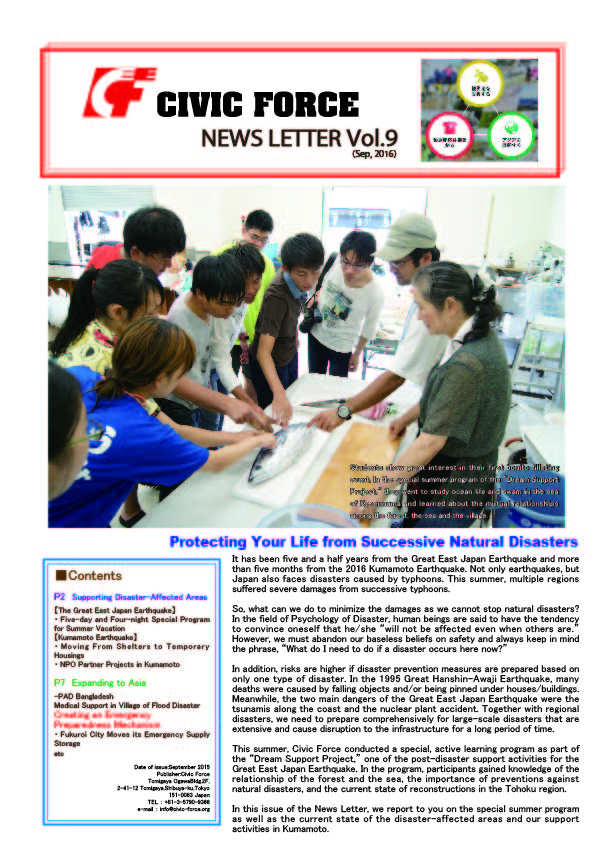The Leading Disaster Relief Agency Civic Force
2016/10/20
【News Letter Vol.9】
It has been five and a half years from the Great East Japan Earthquake and more than five months from the 2016 Kumamoto Earthquake. Not only earthquakes, but Japan also faces disasters caused by typhoons. This summer, multiple regions suffered severe damages from successive typhoons.
So, what can we do to minimize the damages as we cannot stop natural disasters? In the field of Psychology of Disaster, human beings are said to have the tendency to convince oneself that he/she “will not be affected even when others are.” However, we must abandon our baseless beliefs on safety and always keep in mind the phrase, “What do I need to do if a disaster occurs here now?”
In addition, risks are higher if disaster prevention measures are prepared based on only one type of disaster. In the 1995 Great Hanshin-Awaji Earthquake, many deaths were caused by falling objects and/or being pinned under houses/buildings. Meanwhile, the two main dangers of the Great East Japan Earthquake were the tsunamis along the coast and the nuclear plant accident. Together with regional disasters, we need to prepare comprehensively for large-scale disasters that are extensive and cause disruption to the infrastructure for a long period of time.
This summer, Civic Force conducted a special, active learning program as part of the “Dream Support Project,” one of the post-disaster support activities for the Great East Japan Earthquake. In the program, participants gained knowledge of the relationship of the forest and the sea, the importance of preventions against natural disasters, and the current state of reconstructions in the Tohoku region.
In this issue of the News Letter, we report to you on the special summer program as well as the current state of the disaster-affected areas and our support activities in Kumamoto.










